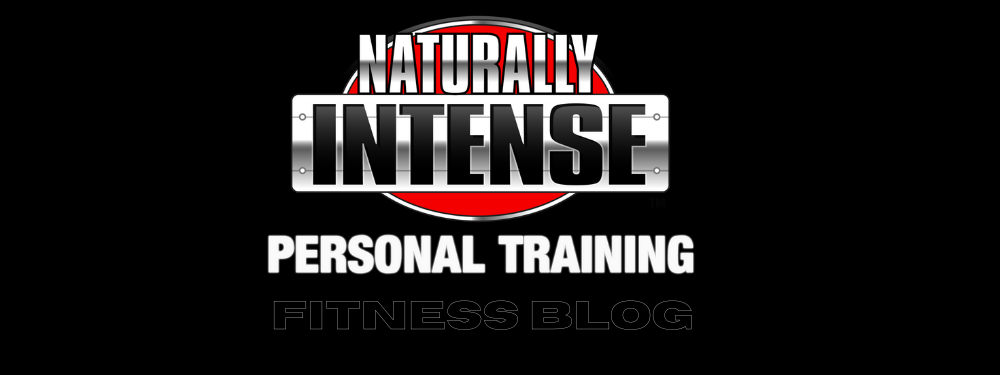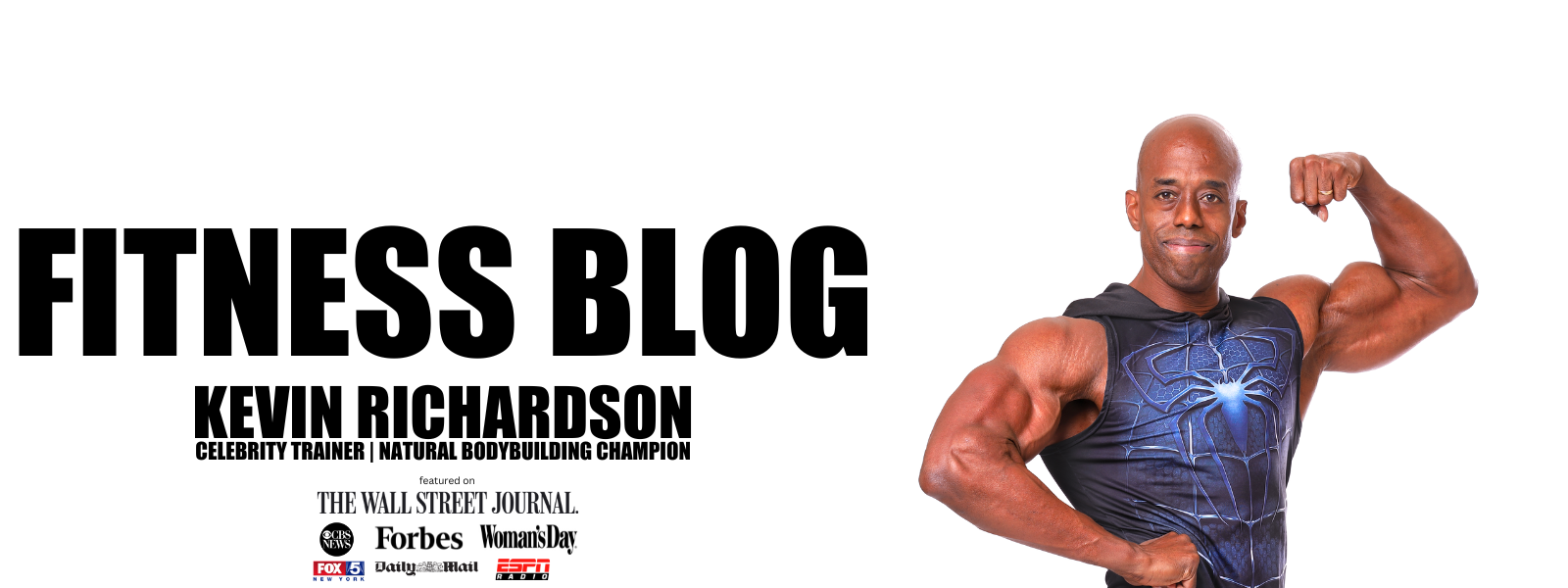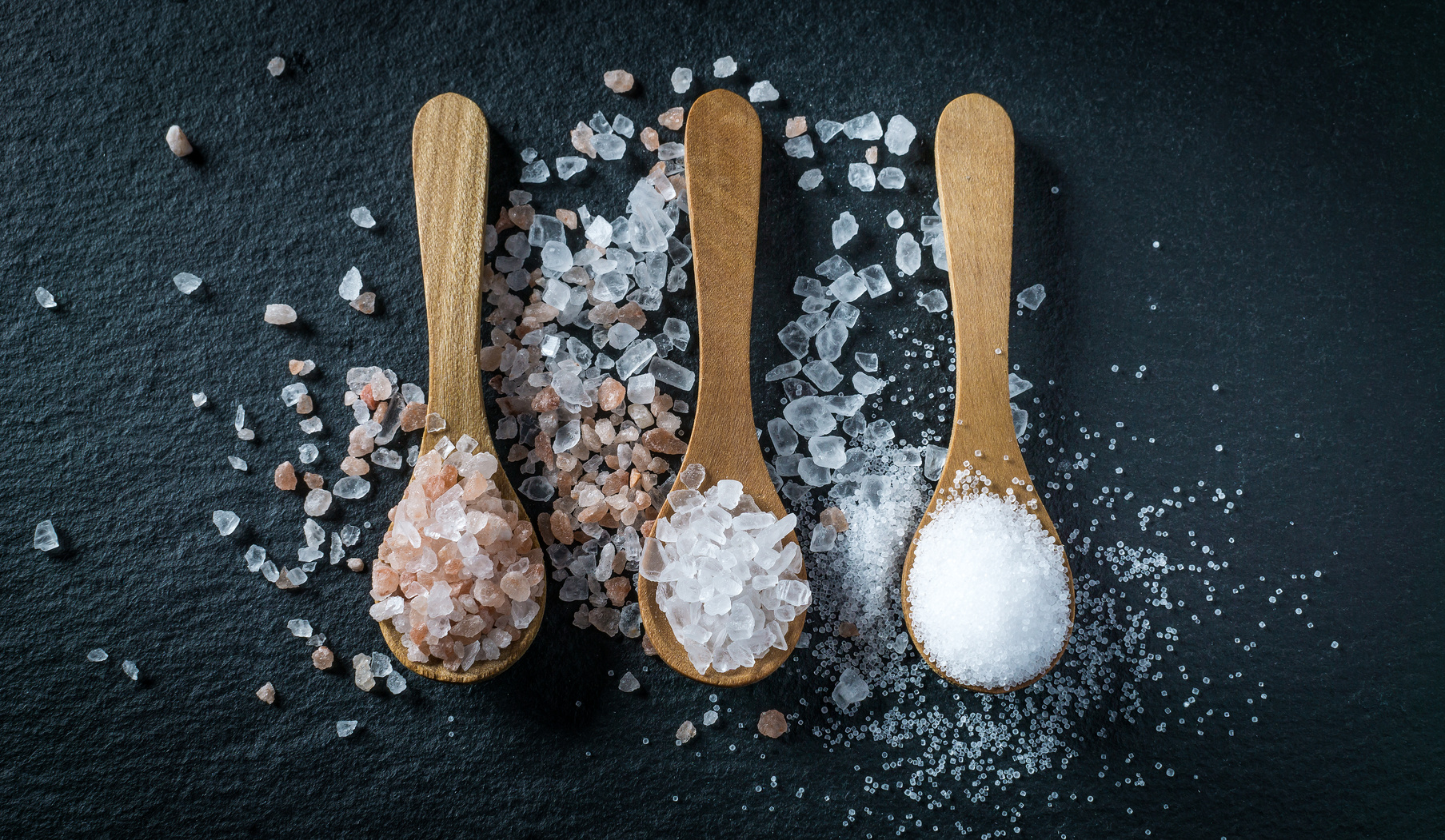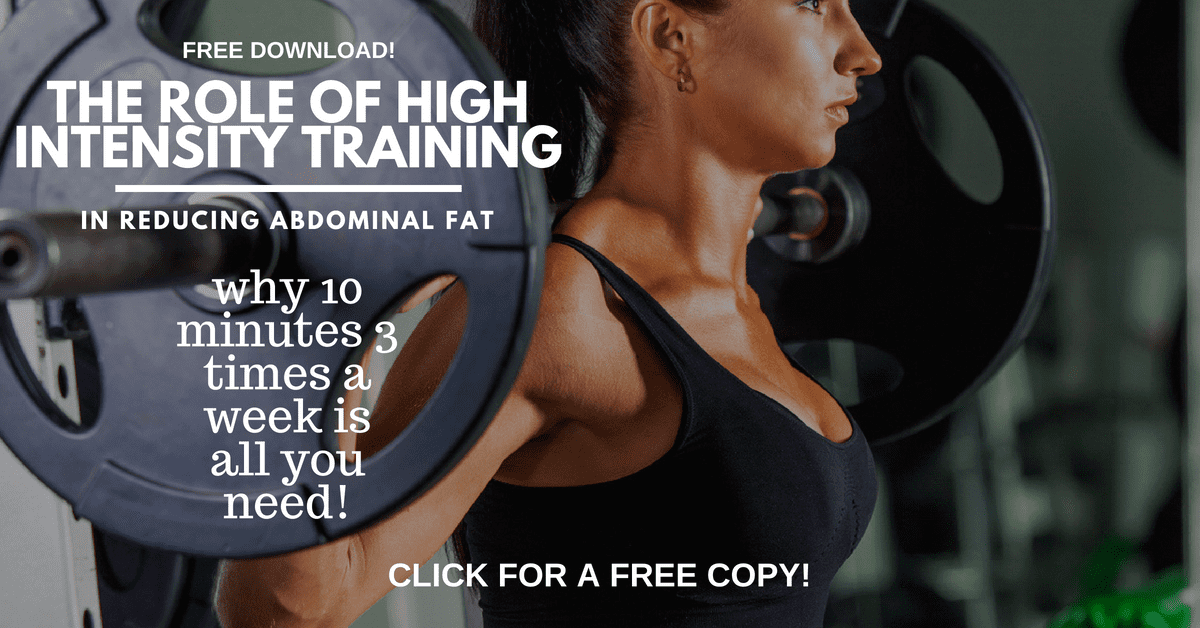Sea Salt & Pink Salt Isn’t Better Than Table Salt And All Salt Is Bad For Your Health
Sea salt and pink salt aren’t better than table salt, its all all sodium chloride (NaCl) and as such they all have the exact same effect in our bodies, regardless of whether the salt comes from the sea, a Himalayan mountain range or a factory. No matter how much profit-minded food manufacturers try to instill sea salt and pink salt with mystical health benefits that defy the laws of biochemistry, it’s not that different from table salt, and you are best served by having neither as regular additions to your diet if you are interested in optimum health. The “sea-salt-is-better-than-table-salt” and “pink-salt-is-better-than-table-salt” campaigns are perfect examples of deliberate misinformation strategies to distract the consumer from the reality that they are all unquestionably unhealthy. Our affinity for salty foods and adding salt to our foods is a very human trait, and people like the idea of being able to have as much salt and salty foods without worrying about it adversely affecting their health. So, while public health advisories about the dangers of high sodium intake abound, the sale of salty foods and high sodium products remain high, thanks to clever marketing. Food conglomerates figured out a way not only to make salt appear healthy, but exotic and as such are also able to charge you more for it! In the smoke and mirrors game called “remarketing” and “rebranding” food manufacturers claim that while regular or table salt is bad for you, sea salt and pink salt are somehow very different from table salt, and actually have beneficial and medicinal properties! It’s quite an attractive lure, you can keep enjoying salty foods with no concern at all for your health if they are made with the more “organic” and “natural” sea salt or pink salt. But as much as marketing hype might claim that sea salt and pink salt are wonder products that can do everything from increasing your energy to fighting cancer, sea salt and pink salt are not only just as bad as table salt but may be worse for your health as the health claims make you more likely to consume more of it! In this article we will look at the chemistry of sea salt, pink salt and table salt and show why neither of them should be regular additions to the diet of anyone serious about optimum health.
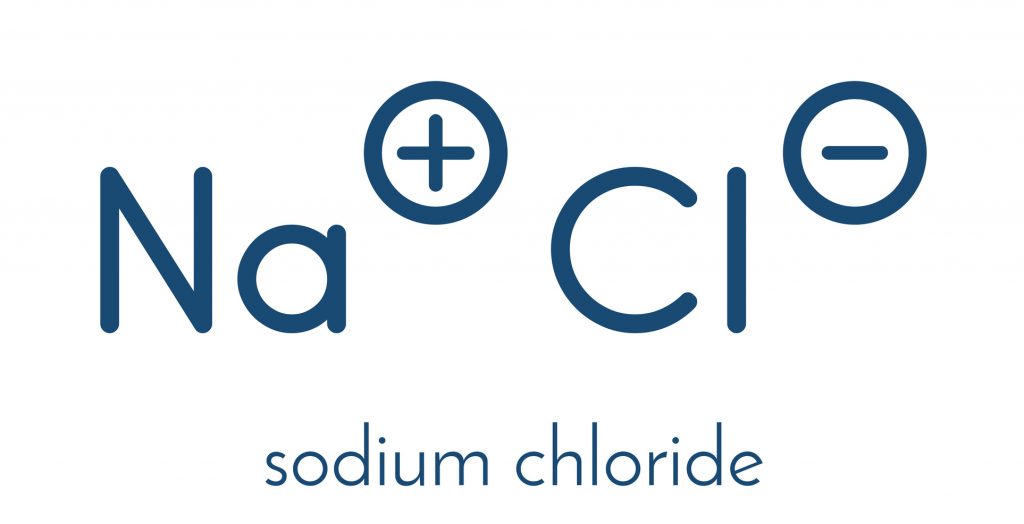
Sea Salt & Pink Salt Isn’t Better Than Table Salt: Understanding What Salt Really Is
As we mentioned earlier, table salt is made mostly of sodium chloride (NaCl), which is made up of two volatile elements, sodium and chloride. The element sodium is given to bursting into flames when in contact with water, and chlorine in its gaseous form is extremely poisonous, and has been used in chemical warfare since World War I. Thus, it’s a bit ironic that together they make a food additive that has been such an integral part of human history. There are many kinds of salts, but sodium chloride is the one that we consume and use as a preservative, and it’s the salt responsible for the taste that we refer to as ‘salty’. Chloride and sodium, the two components of table salt, are required by all known forms of life on earth. Chloride is essential for respiration and digestion, while sodium is an essential mineral that our body is incapable of producing, and so it must be obtained from the dietary sources. Sodium helps our cells transport oxygen from the air we breathe, and nutrients from the foods we eat. It also helps with the transmission of nerve impulses that allow us to control our muscles both consciously, (as is the case with moving your arms or walking), and automatically, (as in the case of the muscle contractions of your heart). Sodium also plays a part in regulating blood volume and the balance of water in our cells.[1] The average adult human contains about 250 grams of salt, which is about enough to fill three to four salt shakers, but our bodies are constantly losing sodium through sweat, urine and respiration and so we need to always have some sodium in our daily diet.[2]
Now as indispensable as may sound, we only need sodium it in very small quantities, 2,300 milligrams to 1,500 milligrams a day is about enough, depending on your age and ethnicity. [3] Unfortunately, most Americans ingest anywhere from 2,700 to as much as 7,000 milligrams of sodium daily, with a little over 75% of that sodium coming from salt added to processed foods. The trouble with sodium is that our taste buds can become desensitized to it over time so if you have a regular high sodium intake, it becomes more and more difficult to determine how much sodium you are actually consuming on a daily basis. Consider that just 1 teaspoon of salt yields slightly more sodium than the upper range of what your body needs for the day, (just about 2,400 milligrams of sodium) and the difficulty in recognizing high sodium foods as being salty if you are regularly consuming it and it should be no surprise that most people easily ingest more sodium than they should. Even if you aren’t using a salt shaker! Why should you care about high sodium intakes? Large long term studies have consistently found that lower sodium intakes are associated with lower blood pressure values, which lowers your risk of hypertension, strokes and heart attacks.[3,4,5] Excess sodium intake has been linked to an increase in the incidence of gastric cancer, kidney stones and osteoporosis, and so as good as it may make your food taste, you have to be careful not to have too much of it.[6] (See my article on Osteoporosis here).
Sea Salt & Pink Salt Isn’t Better Than Table Salt: The Solution to The Problem Of Reduced Sodium Intake
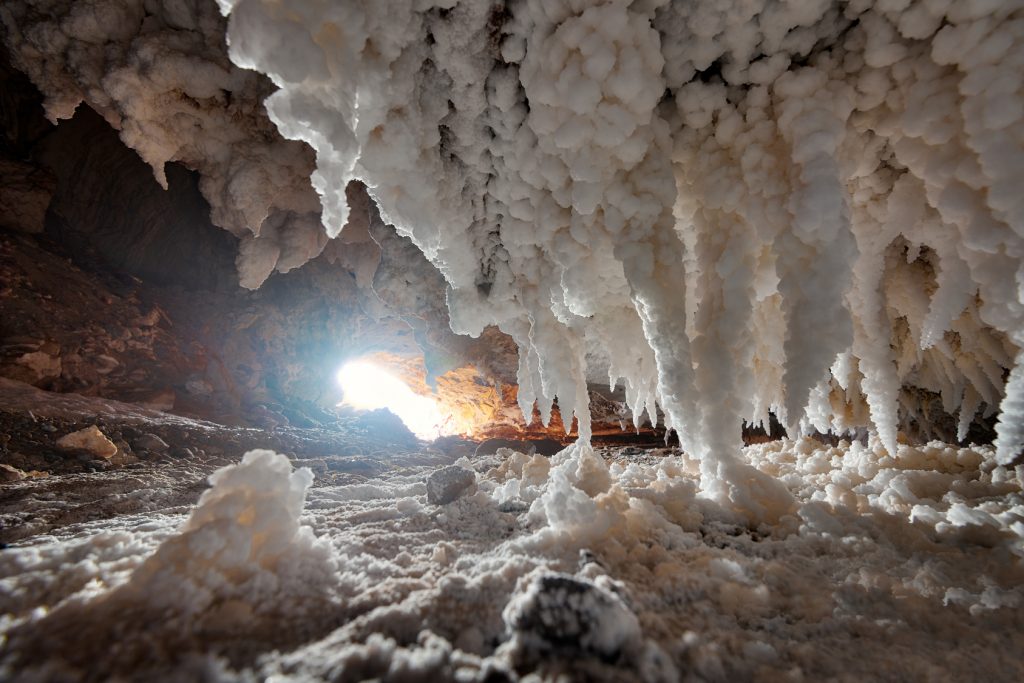
The official stance shared unanimously by all major dietary organizations is that everyone in the general population, children and adults should lower their sodium intake as much as possible by consuming fewer processed foods that are high in sodium and by using LITTLE OR NO SALT when preparing or eating foods.[4] That’s not a call to eat less salt, it’s a call to eliminate it completely from your daily diet. Studies show that adding salt to foods makes us eat more, which is the prime directive of any food company trying to maximize profits and survive in a overly abundant food market. (See my article on the Economics of Obesity: How The Food Industry Makes You Overeat for a detailed overview). Faced with such dire health advisories, the work around for the problem came in the form of sea salt. Which many perceive sea salt and pink type salts as being somewhat exotic and distinctly different from table salt, it isn’t that different at all. It all boils down to our natural inclinations towards associations. The sea and the ocean are seen associated with nature and by extension, purity. Thus, we can have unconsciously reactions to an image of sea salt taken directly from the life-giving sea by ‘traditional’ methods that have been used for centuries. The nostalgic allure of age-old traditions (which we associate with being good) versus modern processes, (which are often thought to be bad), isn’t about creating a healthy product for you, it’s just brilliant marketing that tugs at all the right strings to make you more likely to purchase their product. Himalayan pink salt, mined the traditional way from one of the most exotic locations on earth, also conjures up a perception that it might be good for you, and I hate to say this, but if it was called Pakistani pink salt, which it is, as it comes from the Punjab region of Pakistan, it simply would not sell as well and people would be less inclined to believe it to have wondrous properties. As the country Pakistan does not have the same associations as “Himalayan.” Unfortunate, but true.
Sea Salt & Pink Salt Isn’t Better Than Table Salt: How Salt Is Made
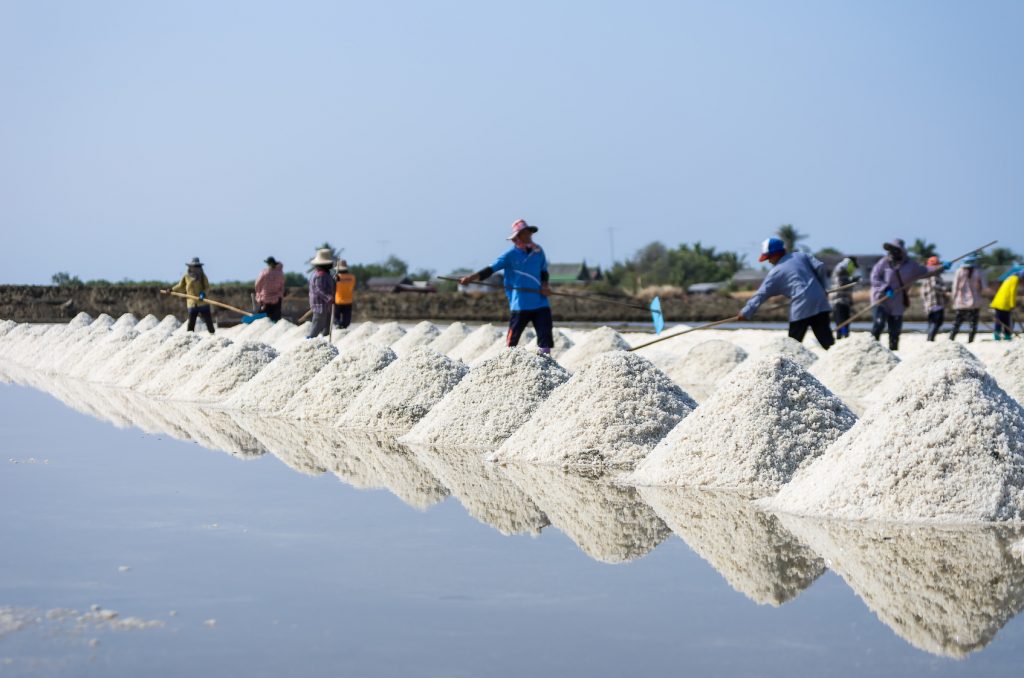
Before delving into how salt as made, it’s important to note that huge food corporations such as Cargill and Morton own most of the saltworks in the industry. Table salt and most of the sea salt sold on the market all come from the same giant conglomerate, (more proof that sea salt isn’t better than table salt!) All salts that we use for food is produced one of three ways, from mining naturally occurring rock deposits, vacuum evaporation and solar evaporation. In rock salt mining, as is the case with Himalayan pink salts, the salt is mined directly from large underground deposits and is then purified and processed. Most of the table salt produced comes from vacuum evaporation, which is done by dissolving rock salt with water to create a brine solution. This solution is then pumped into a vacuum evaporator that removes all the air and boils off the water, leaving behind pure salt. Calcium silicate is then added to keep the salt from clumping together and so that it flows freely when poured from its container. Potassium iodide is often to most salts as a dietary source of iodine, with some dextrose (sugar) added to keep the iodide stable. Sea salt comes from evaporated seawater, which has a concentration of 2.7% sodium chloride. Seawater also contains small amounts of calcium, magnesium, and sulfate ions, elements that give sea salt a particularly different taste than table salt. With solar evaporation, seawater is corralled into shallow ponds and then dried by the action of the sun and wind to create layers of highly concentrated sodium chloride. This salt is then rinsed to remove impurities, then dried a second time. And in some cases, it is processed via vacuum evaporation to create a commercially usable sea salt. The resulting salt is about 99.5% sodium chloride, which isn’t that different from table salt, except that it usually costs significantly more (which also makes you more likely to believe it to be healthier, by the way), and due to the presence of other minerals there is a difference in texture. Free flowing agents are not usually added to sea salt, so it tends to be in more of a rock form than the salt shaker ready small grains of table salt. That said, there are no differences in negative health outcomes from using sea salt over table salt.[7,8] While marketing may extoll the ‘natural process’ of solar salt extraction from the sea or the ‘nutritious trace minerals’ found in sea salt, the fact of the matter remains that it’s still ultra-high levels sodium chloride and the extra minerals can’t do anything to offset the adverse health risks caused by having too much of it in your diet.
Sea Salt & Pink Salt Isn’t Better Than Table Salt: Arguments For Not Restricting Salt Intake
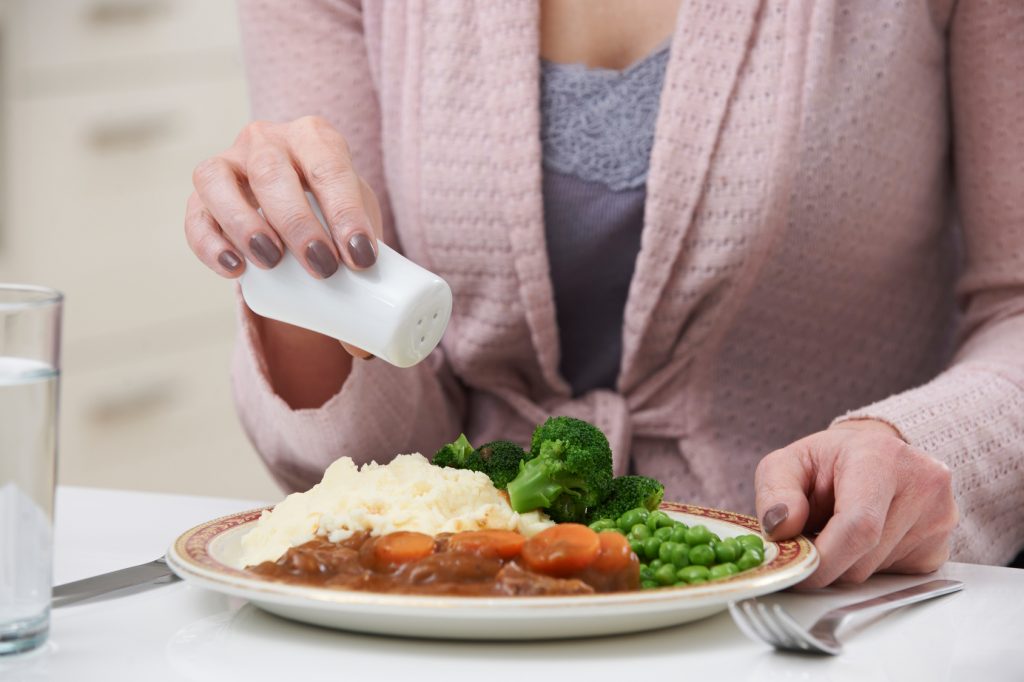
There are some who argue that a lower sodium diet is a mistake since we need salt as part of our diet for optimal health. However, such logic simply does not stand up to anthropological observations of societies where added salt is not a regular part of the human diet. These populations have no ill effects from not directly consuming salt, nor do they have the high rates of hypertension and heart disease that is the main cause of death here in Western developed countries where sodium consumption is high. We are nothing but the product of hundreds of thousands of generations of hominid adaptation to the natural environment, and natural sources of salt are very rare unless you lived by the sea. As a result, for millions of years, the average daily sodium intake of our ancestors was far lower than what it is for most people living today in a world where we have an seemingly limitless supply of salt. Looking at the issue from this perspective brings into focus the fact that there is somewhat of an evolutionary mismatch.[12 ] A mismatch between how much sodium our bodies were once used to having (and what is most logically our optimal intake) and the amount of sodium the average Westerner ingests daily today. Our hunter gatherer ancestors (and modern foraging societies tribes such as the Masai) who consumed a largely carnivorous diet have sodium intakes of between 1,000 to 2,00 milligrams of sodium daily. Where do they get this much sodium, you might ask if they don’t have access to salt? The sodium comes from the wild animals they consume, as all animal food sources naturally contain significant amounts of sodium. Which is why as long as you have some protein in your diet, your sodium intake would still be equal to if not more than enough sodium for your body’s daily requirements. Even if you never cooked with or added any salt to your meals. Looking at the other end of the spectrum, a low sodium diet doesn’t seem to have any ill effects as the Yanomami Indians, who eat a mostly vegetarian diet, have a very low sodium intake throughout the course of their lives and suffer no ill effects from it.[9] In fact, the Yanomami have almost no cases of hypertension or obesity [9] and it is interesting that both the Masai and Yanomami both have much higher potassium intakes compared to the average daily potassium intake in developed countries. Studies show that men and women with higher potassium intakes tend to have lower blood pressure and a lower risk of hypertension and unfortunately excessive sodium intake can increase your body’s requirements for potassium. [4]
Sea Salt & Pink Salt Isn’t Better Than Table Salt: Why You Need To Minimize Salt Intake
The problem with a high salt diet is that your body can only use a certain amount and all the excess salt ends up in your blood. Sodium has the effect of pulling fluids from the body’s tissues and into the circulatory system. Increasing your overall blood volume. Your heart is a pump that has to pump hard enough to circulate your blood throughout your arteries and back via your veins. If blood volume increases, your heart has to pump more forcefully, which elevates the blood pressure in your arteries. This is how hypertension can develop, and over time, the increased blood pressure stresses the heart and arterial walls, which triggers a cascade of inflammation that can cause hardening of the arteries, plaque buildup and thus increase the occurrence of stroke and or heart attacks.[13] This would not be the case if we were designed for a high sodium diet, but it is an evolutionary mismatch that is partly responsible for millions of preventable deaths each year. We don’t know what the minimum sodium dose is that brings about increases in blood pressure enough to cause adverse health effects and so it is advisable to never have salt as part of your diet, regardless of whether it’s sea salt, pink salt or any new type of salt that pops up on the market. Salt’s quality of increasing water retention can also make you see some large swings on the scale and having a high sodium diet while losing weight can also make it a little harder to deal with loose skin if you are losing a significant amount of weight. See my article Dealing with Loose Skin. and How To Stop Stress Eating for more detailed information on how salt adversely affects us.
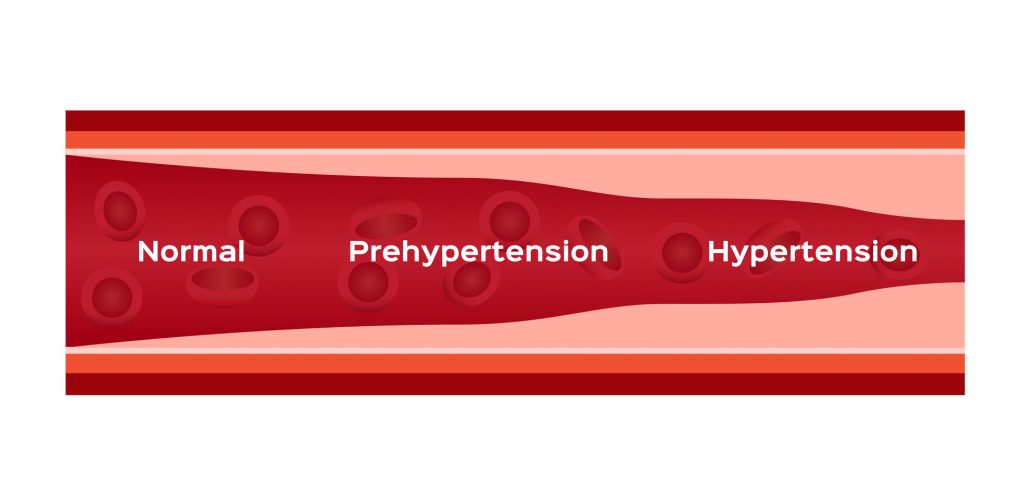
Studies show that in developed countries, blood pressure increases with age, a phenomenon that starts early in childhood and continually increases as you get older. Given this pattern, attempts to moderate blood pressure increases are important at ALL stages of life and you can’t simply wait to reduce your sodium intake when it starts to become a problem. Most importantly, ALL research shows a consistent pattern of lower blood pressure among groups with lower sodium intakes. Which makes it hard to find any health value of sea salt, pink salt or any salty and high sodium foods as part of a healthy diet. Especially when nearly one out of three Americans have high blood pressure and that a quarter of the population is already pre-hypertensive.[10,11] If anything, the popular idea that sea salt, pink salts and Himalayan salts are okay, while table salt is bad, only increases overall consumption, as consumers believe that it won’t adversely affect them the way regular salt would.
Sea Salt & Pink Salt Isn’t Better Than Table Salt: Hidden Sources of Sodium To Be Avoided
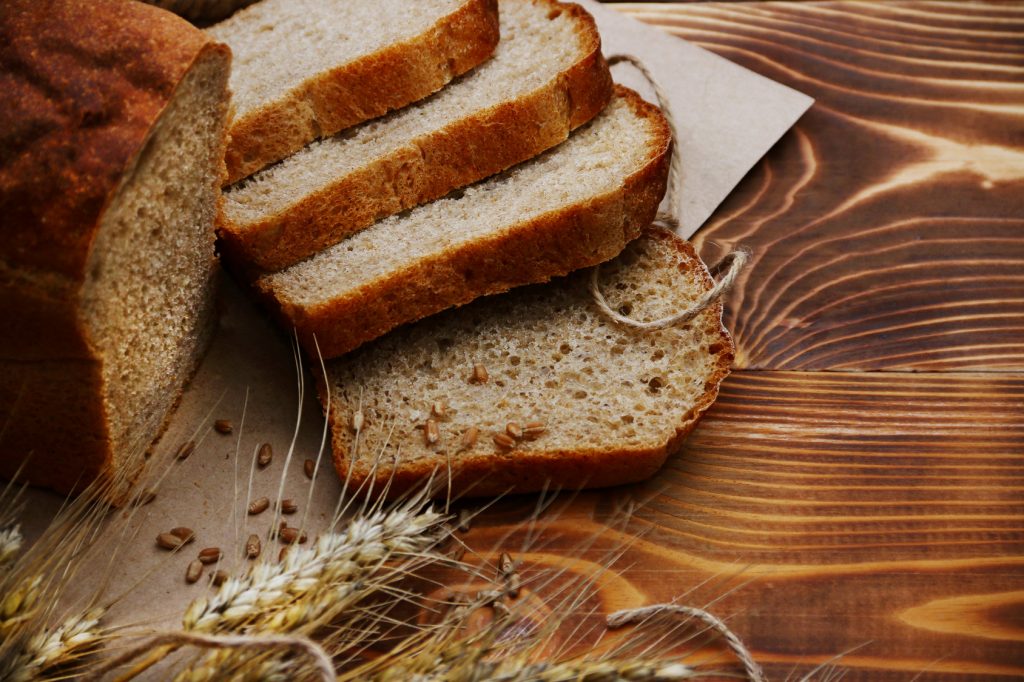
In the 1980’s when links between sodium intake and hypertension were first discovered, the strategy was to advise the public to eliminate the salt shaker from their tables, and today many are puzzled to find themselves to be hypertensive or pre-hypertensive even though they don’t cook with or add salt to their foods. The problem is that salt is everywhere and is few are aware that the number one sources of salt isn’t from people adding salt to their foods, it’s from processed foods with added sodium.
The top sources of sodium here in America, for everyone, regardless of age, race or gender are:
Bread
The highest source of sodium for non-Hispanic Whites. (See my article Can Bread Make You Fat).
Chicken mixed dishes.
The highest source of sodium among non-Hispanic Blacks.
Pizza
The highest source of sodium among Americans aged 2-18 years old.
Hamburgers
A major source of sodium for males aged 14-18 years old.
Mexican mixed dishes.
The highest source of sodium for Mexican Americans.
Soups
A major source of sodium for those aged 51 years and older.
Other notable mentions for high sodium sources in the US diet are:
Pasta dishes & cold cuts.
Sausages
Franks
Bacon
Ribs
Grain based desserts
Condiments (such as ketchup and mustard)
Salad dressing
Ready to eat cereals. [6]
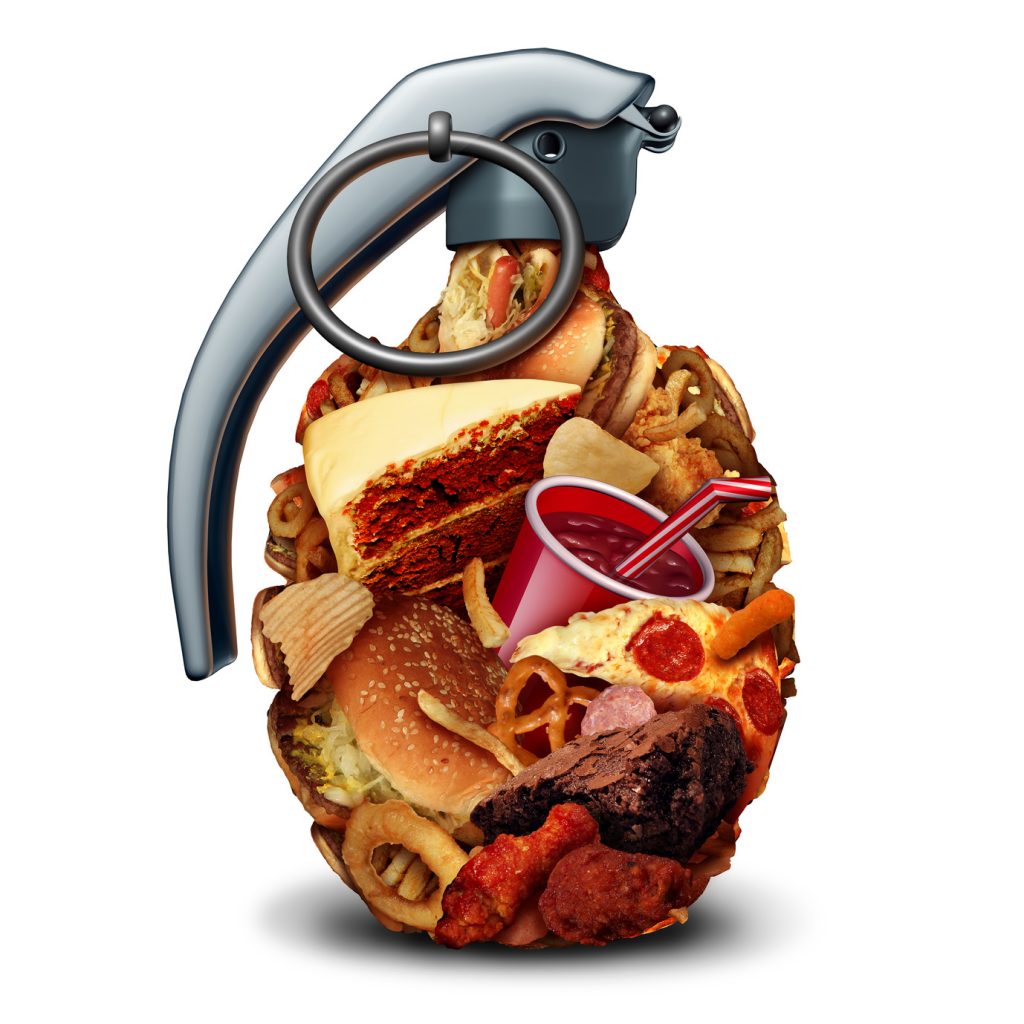
These foods add nearly 2,000 milligrams of sodium per person per day, and account for about 56% of the daily sodium intake. [4] Another notable source of sodium is potato chips. A 2009 survey from the marketing firm Mintel, found that half of kids, teenagers and young adults aged 18-24 reported that they ate salty snacks like potato chips at least five times a week. With the frequency of consumption for older adults being only slightly less. The problem is twofold. Firstly that we are hardwired to like salt and secondly that it does a remarkable job of making processed foods more appealing.[14] One might ask why it is that food manufacturers didn’t simply try to earn public trust by lowering or eliminating salt from their products, and the answer is that sales plummet when salt is taken out of processed foods. Can you imagine salt free pizza? And today’s breads and ready to eat cereals, like so many modern refined foods have a bit of a bitter and astringent taste to it as a result of all the processing it goes through. The same holds for weight loss products and so called “health” bars, as salt provides a cheap and effective way to mask the unpleasant tastes that processing generates, while increasing our desire to consume more. Add on to this the idea that pink or sea salt is healthy and somehow different than regular salt, and you have a recipe for increased consumption that justifies a higher price. Take for example, the multi-billion-dollar sea salt or pink salt flavored “healthier” potato chip market. Consumers swear that the salt they use has some magical attribute that makes it okay to eat, (something I have heard time and time again with my clients) but as we know, it only makes you more likely to keep on eating what you shouldn’t. The good news is that while switching to a low salt diet intake may seem like a daunting task, after only two to four weeks your taste buds begin to adjust, and you lose the taste for salted foods. As it’s an acquired taste, not a naturally occuring one. Over time foods with even trace amounts of added salt will be overwhelming and you will find yourself with a preference towards foods with no added salt. You will be surprised how great foods can taste without salt and how better you will feel overall.
High Intensity Bodyweight Training: Ballistic Pushups & Dips!
This was a tough one!
Starts out with ballistic push ups (like clap pushups but without the clap as my wrist is still not 100%) nonstop for 20 reps, then all out on dips for 10 reps.
To say it was painful would be an understatement, but you just have to push through and keep on going.
Still training, hope you are too and as always, Excelsior!!! #naturallyintense
#hometraining #homeworkout #homeworkout #highintensitytraining #naturalbodybuilder #naturalbodybuilding #fitover40 #naturalbodybuildingvideos #chestday #chesttraining #naturalbodybuildingtips #pushups #dips #bodyweighttraining #highintensitytrainingtips #drugfreebodybuilding #calesthenics
Kevin's Unconventional Biceps Training- 3-6 Minutes a Week!
In this video I go over my biceps training using the Naturally Intense High Intensity Training protocols that helped me go from having arms measuring 11.5 to 12 inches to 18 inches drug free!
It's an unconventional approach for certain, but it's one that's helped my arms grow and the hundreds of men and women I have trained over the past 30 plus years.
Now, my success isn't due to being genetically gifted, as it took me the better part of 11 years to get my arms up to those measurements.
Which is significant as it works and been been proven time and time again to work for the average man or woman trying to grow their arms without drugs.
It's my hope that these high intensity training protocols can help you as much as they helped me!
Click on my bio link to see the full video on my YouTube channel and thanks as always for taking the time to look at my work!!! Excelsior!!! #naturallyintense
#highintensitytraining #naturalbodybuilder #naturalbodybuilding #fitover40 #naturalbodybuildingvideos #armworkout #bicepsworkout #naturalbodybuildingtips #biceps #armtraining #highintensitytrainingtips #drugfreebodybuilding #barbellcurls
At the Lancaster Classic Day 2 Elimination Rounds Against European Champion, and World Record Holder Leo Pettersen @leo_barebow_archer
I don't talk much about it but I'm also a competitive barebow archer (surprise!) and last Saturday I had the honor of making it to Day 2 at the Lancaster Archery Classic in the Barebow Division, as I made the top 64 out of 267 competitors and had a chance to shoot with some of the greatest barebow shooters on the planet!
I didn't make it past Leo, but it was a real rush to be there and a huge thanks to my coach, Joe MyGlyn @prolinearchery for helping me get there.
Thanks as well to my good friend @sean_chan33 for all of his help from the very start, to my line buddy Aaron Shea for taking the shot and showing up to support!
My thanks as well to rob_kaufhold for putting on and promoting one of the best archery tournaments on earth!
Thanks also to to everyone who took the time to send a supporting word and I am looking forward to next year!!! #naturallyintense #barebow
#lancasterclassic #lancasterarcheryclassic2024 #lancasterarchery #archery #fitover40 #barebowrecurve #targetarchery
Dumbo, Brooklyn circa 2004
This shot was taken as part of the promotion for my Naturally Intense DVD and was about a year after my last bodybuilding competition.
It was a grueling photoshoot.
We started at about 10 am and finished around 4pm and I was completely spent, but the more we shot the sharper I looked, so we kept on going.
It's nice to look back from time to time and as tired as I was, we all had a blast!
My thanks to @stephanie_corne_artwork, @https://pulse.ly/itgnag2dec and @ftaz1 for taking the shots!!!
Thanks for watching and as always, Excelsior!!! #naturallyintense
#naturalbodybuilder #naturalbodybuilding #throwback #fifthavenuegym #5thavenuegym #drugfreebodybuilding #naturalbodybuildinglifestyle #gymlife #gymmotivation #naturalbodybuildingmotivation #bodybuilding #blackandwhite #instablackandwhite #bnw
Can You Build An Impressive Physique Training Only At Home?
Absolutely!
I stopped training in commercial gyms as of March 2020 and have been training at home ever since.
Initially I was admittedly worried that I might lose some of my gains or not make as much progress, but that certainly wasn't the case.
I've consistently continued to improve with my high intensity workouts and muscles have no idea where they are training.
As long as the criteria of adequate intensity and overload are met, there will be an adaptive response and your muscles will get bigger and stronger.
So don't worry at all about where you train, focus instead of what will be the best way for you to always be training!
Thanks for watching and as always, Excelsior!!! #naturallyintense
Kevin's Three Day Training Spilt!
For the past 33 years I have trained three times a week with Naturally Intense High Intensity Training workouts lasting 10, 15 to 20 minutes max.
It's a training split tried and testes not only in it's helping me realize my goal of becoming a successful natural bodybuilder, but it's also helped hundreds of men and women over the past three decades.
I have tested just about every possible training split imaginable and for this particular style of high intensity training, this particular grouping consistently yields fantastic results.
I hope it helps you as much as it's helped me over the years and thanks so much for taking the time to look at my work.
Keep training hard and Excelsior!!! #naturallyintense
Excelsior!!! #naturallyintense
#trainingsplit #3daytrainingsplit #threedaytrainingsplit #naturalbodybuilding #naturalbodybuilder #naturalbodybuildingvideo #naturalbodybuildingmotivation #naturalbodybuildingtips #drugfreebodybuilding #bodybuilding #highintensitytraining #highintensitytrainingtips
405 Stiff Leg Deadlift for 7 Reps! High Intensity Training.
First leg workout of the year and already pushing it!
I haven't done a stiff leg deadlift over 315lbs for about 3 years at this point, and I did my last set with 315lbs and comfortably got to 10 reps and decided I had far too much gas left in the tank and that I should go up in weight.
So I did.
I figured I might get a solid 6 reps in, but I made it to 7 and I think I could have gone on to get a full 10 reps BUT that's when good judgement prevailed.
As a bodybuilder having not trained this heavy for so many years, the shock of this much weight would be more than enough to stimulate muscle growth, and doing more reps wouldn't yield any greater returns, only increase the likelihood of injury.
It's not about the numbers, it's about training to a point where you achieve your goal, and it's important to have a goal in mind as a bodybuilder based on increasing muscle mass rather than hitting a particular number.
Besides, if in my 20's I never did more than 405lbs on a stiff leg deadlift, it doesn't make any sense going heavier than when I am almost 50!
Could I deadlift more at this point?
Absolutely but just because you can doesn't mean you should!
So keep those weights in a good working range, keep it safe and as always Excelsior!!! #naturallyintense
#hometraining #homeworkout #homeworkout #roguerack #highintensitytraining #naturalbodybuilder #naturalbodybuilding #fitover40 #naturalbodybuildingvideos #backworkout #naturalbodybuildingtips #backtraining #highintensitytrainingtips #drugfreebodybuilding #fitoverforty #deadlift
Turning 50 in a few months...
Not much of a big deal for me as I still feel pretty much the same but I hope that my example helps show what can be done with a lifetime commitment to eating well and training consistently!
Thanks for coming along on the journey and as always, Excelsior!!! #naturallyintense
#naturalbodybuilder #naturalbodybuilding #healthylifestyle #fitover40 #drugfreebodybuilding #naturalbodybuildingmotivation #natty #fitness
Please note that all material is copyrighted and DMCA Protected and can be reprinted only with the expressed authorization of the author.
CLICK FOR A FREE COPY OF KEVIN’S WEIGHT LOSS EBOOK!
Featured everywhere from the Wall Street Journal to CBS News, Kevin Richardson’s Naturally Intense High Intensity Training have helped hundreds lose weight and transform their bodies with his 10 Minute Workouts. One of the top natural bodybuilders of his time, Kevin is also the international fitness consultant for UNICEF and one of the top personal trainers in New York City.
Related Articles
The Restaurant Gide- How To Eat Out And Stay Healthy
What To Do When You Cheat On Your Diet
References for Sea Salt & Pink Salt Isn’t Better Than Table Salt
1. Caldwell, J. H.; Schaller, KL; Lasher, RS; Peles, E; Levinson, SR. “Sodium channel Nav1.6 is localized at nodes of Ranvier, dendrites, and synapses”. Proceedings of the National Academy of Sciences 2000
2. Kurlansky M. Salt- A World History. Penguin 2003
4. Report of the DGAC on the Dietary Guidelines for Americans, 2010
3. Kotchen TA, Kotchen JM, Boegehold MA. Nutrition and hypertension prevention. Hypertension. 1991
4. He FJ, MacGregor GA. Effect of longer-term modest salt reduction on blood pressure. Cochrane Database Syst Rev. 2004
5. Hooper L, Bartlett C, Davey Smith G, Ebrahim S. Reduced dietary salt for prevention of cardiovascular disease. Cochrane Database Syst Rev. 2003
6. Sources of Sodium Among the US Population, 2005-06. Risk Factor Monitoring and Methods Branch. Applied Research Program. National Cancer Institute.
7. Zeratsky, Katherine (27 August 2009). “Is sea salt better for your health than table salt?”. Mayoclinic.com. Mayo Foundation for Medical Education and Research. Retrieved 22 April 2011.
8. Australian Broadcasting Corporation – Health and Wellbeing – Rae Fry and Professor Bruce Neal – November 2010
9. Mancilha-Carvalho JJ, Albuquerque de Souza e Silva N. “Yanomami Indians in the INTERSALT study”. Arq Bras Cardiol 2003
10. National Center for Health Statistics. Health, United States, 2008 Adobe PDF file [PDF 8.4M]. Hyattsville, MD: National Center for Health Statistics; 2008.
11. Lloyd-Jones D, Adams RJ, Brown TM, et al. Heart Disease and Stroke Statistics—2010 Update. A Report from the American Heart Association Statistics Committee and Stroke Statistics Subcommittee External Web Site Icon. Circulation. 2010
12. Lieberman D. The Story of the Human Body: Evolution, Health, and Disease 1st Edition. Random House 2013
13. Tropea BI et al. Reduction of aortic wall motion inhibits hypertension mediated experimental atherosclerosis. Atherosclerosis Thrombosis and Vascular Biology 2000
14. Moss M. Salt Sugar Fat: How the Food Giants Hooked Us. Random House; 1st edition 2013
